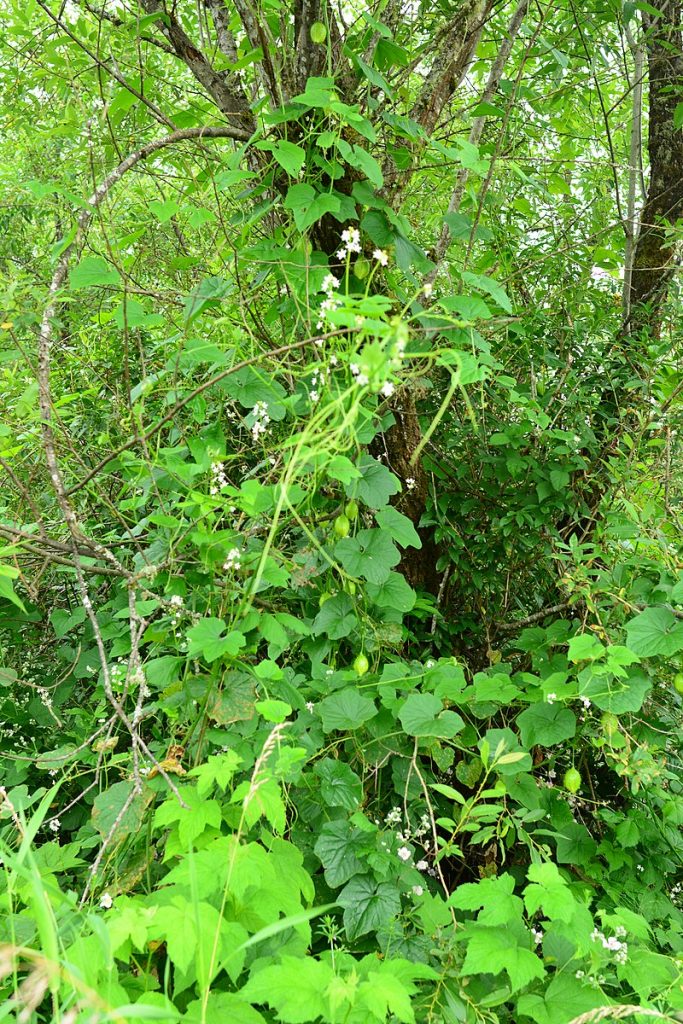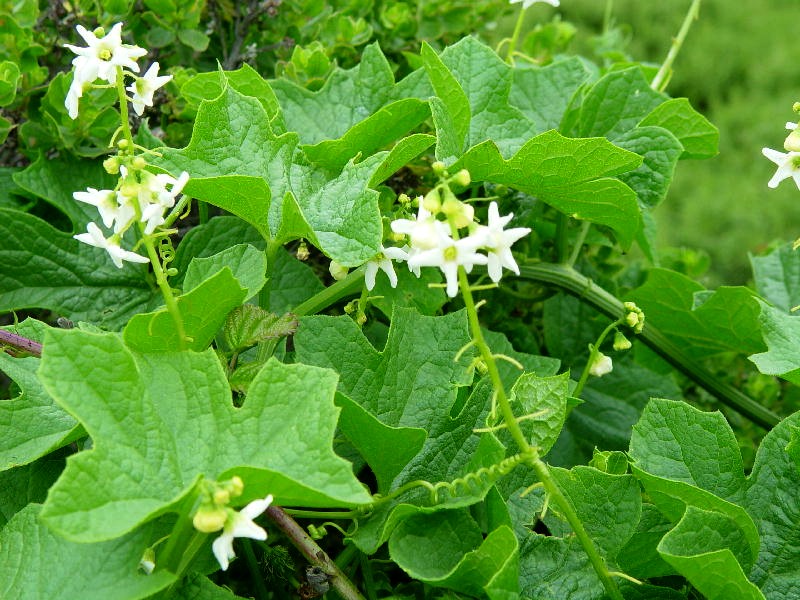
Also known as coastal manroot and western wild cucumber, this perennial trailing or climbing vine is native to the streams, washes, and open areas from Canada to northern California west of the Cascades. It is a member of the gourd family, Cucurbitaceae, that also includes cucumber, squash, and watermelon. The plant grows from a huge, hard, woody, tuberous root that can be several yard long and weight over 200 pounds. The stems are herbaceous, bear tendrils, and can grow up to 20′ long/tall. The alternate leaves are up to 8″ long and are irregularly palmately lobed. They are rough and hairy on top, and sparsely hairy or hairless on the bottom. Small star-shaped male and female flowers appear on the same plant in spring. They have 5 lobes and are yellowish green to cream or white. The male flowers are in open racemes while the female flowers are in the axil at the base of the racemes and have a swollen base. The spherical fruit is 1- 3″ long, 1.5-2″ across, and is covered with short prickles. Bright green ripening to yellow, the fruit swells as it ripens releasing 2-8 large, flattened, disc-like, brown seeds. The seeds are believed to be poisonous. The genus name, Marah, is from the Hebrew word מָרָה, meaning bitter, and refers to the taste of the fruit. The specific epithet, oregana, is the latinized name of the state Oregon where the plant is native. Photo Credit Joe Mabel Wikimedia Commons

Type: Herbaceous vine
Bloom: Greenish to white male and female flowers on the same plant in spring
Size: 20′ H
Light: Sun to shade
Soil: Variable; average, medium moist, well-drained
Hardiness: Zones 7-11 (unverified)
Care: Contain if weedy
Pests and Diseases: Susceptible to damage by Western spotted cucumber beetle, striped cucumber beetle, and bacterial wilt.
Propagation: Seed
Companion Plants: None (Not suitable for a garden)
Photo Credit: Franco Folini Wikimedia Commons